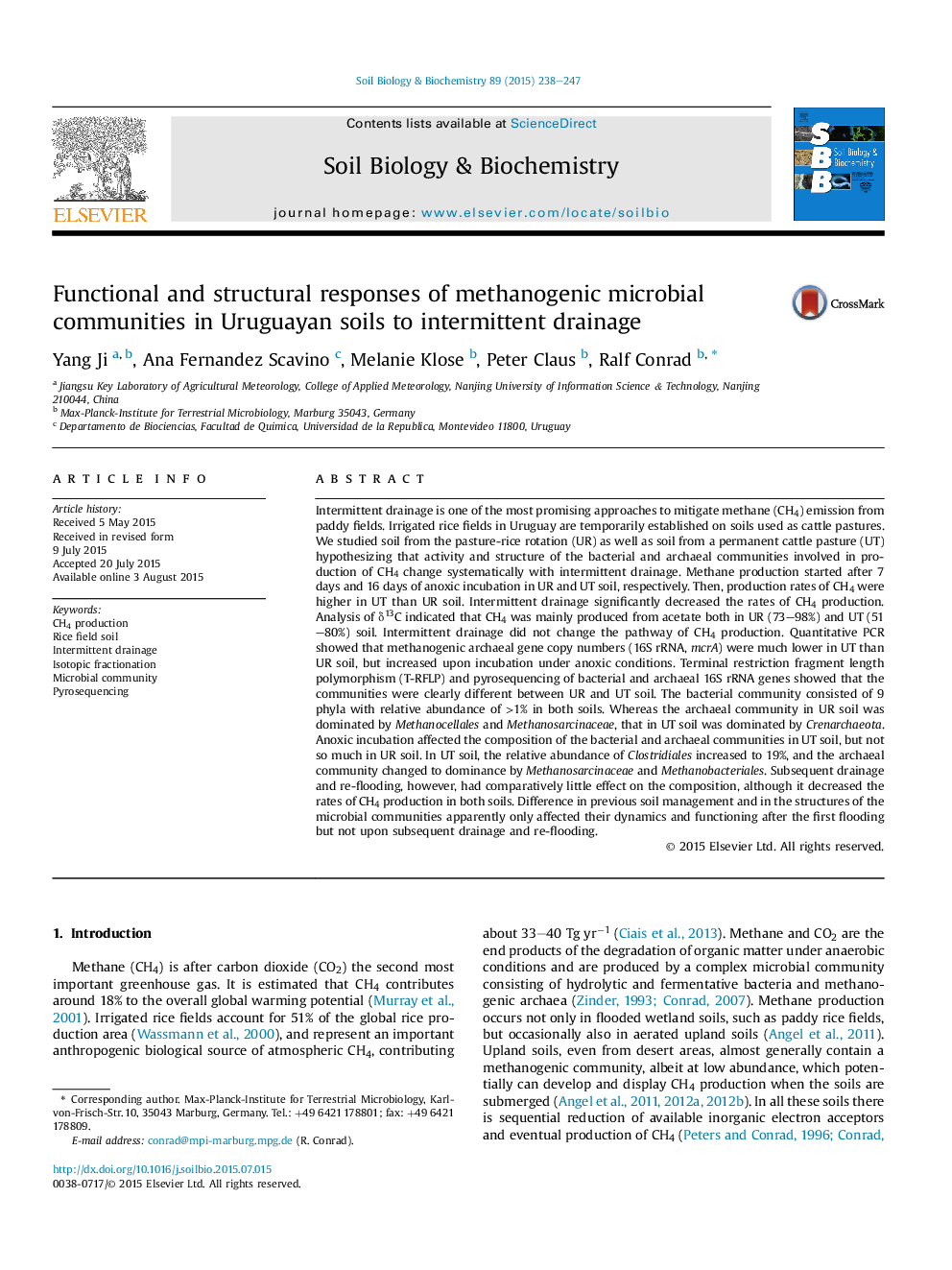| Article ID | Journal | Published Year | Pages | File Type |
|---|---|---|---|---|
| 2024471 | Soil Biology and Biochemistry | 2015 | 10 Pages |
•Soil from a pasture and a pasture-rice rotation both produced methane upon flooding.•The microbial communities in the two soils were different but function was similar.•Once flooded drainage hardly affected structure and function of the soil community.
Intermittent drainage is one of the most promising approaches to mitigate methane (CH4) emission from paddy fields. Irrigated rice fields in Uruguay are temporarily established on soils used as cattle pastures. We studied soil from the pasture-rice rotation (UR) as well as soil from a permanent cattle pasture (UT) hypothesizing that activity and structure of the bacterial and archaeal communities involved in production of CH4 change systematically with intermittent drainage. Methane production started after 7 days and 16 days of anoxic incubation in UR and UT soil, respectively. Then, production rates of CH4 were higher in UT than UR soil. Intermittent drainage significantly decreased the rates of CH4 production. Analysis of δ13C indicated that CH4 was mainly produced from acetate both in UR (73–98%) and UT (51–80%) soil. Intermittent drainage did not change the pathway of CH4 production. Quantitative PCR showed that methanogenic archaeal gene copy numbers (16S rRNA, mcrA) were much lower in UT than UR soil, but increased upon incubation under anoxic conditions. Terminal restriction fragment length polymorphism (T-RFLP) and pyrosequencing of bacterial and archaeal 16S rRNA genes showed that the communities were clearly different between UR and UT soil. The bacterial community consisted of 9 phyla with relative abundance of >1% in both soils. Whereas the archaeal community in UR soil was dominated by Methanocellales and Methanosarcinaceae, that in UT soil was dominated by Crenarchaeota. Anoxic incubation affected the composition of the bacterial and archaeal communities in UT soil, but not so much in UR soil. In UT soil, the relative abundance of Clostridiales increased to 19%, and the archaeal community changed to dominance by Methanosarcinaceae and Methanobacteriales. Subsequent drainage and re-flooding, however, had comparatively little effect on the composition, although it decreased the rates of CH4 production in both soils. Difference in previous soil management and in the structures of the microbial communities apparently only affected their dynamics and functioning after the first flooding but not upon subsequent drainage and re-flooding.
